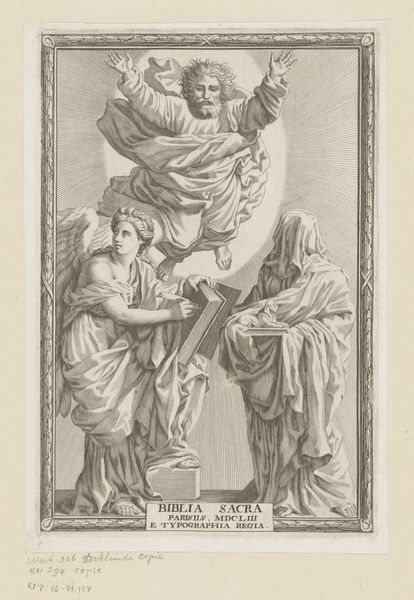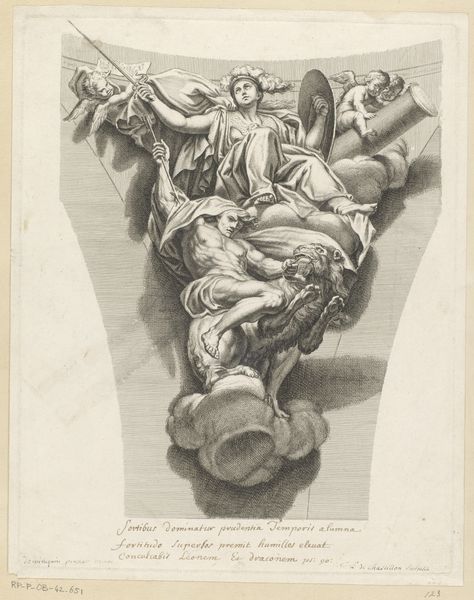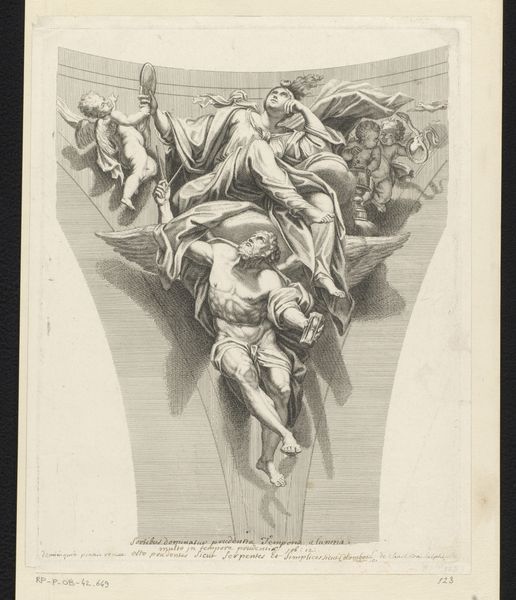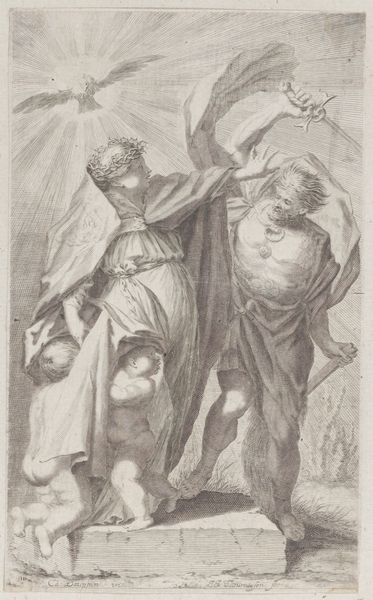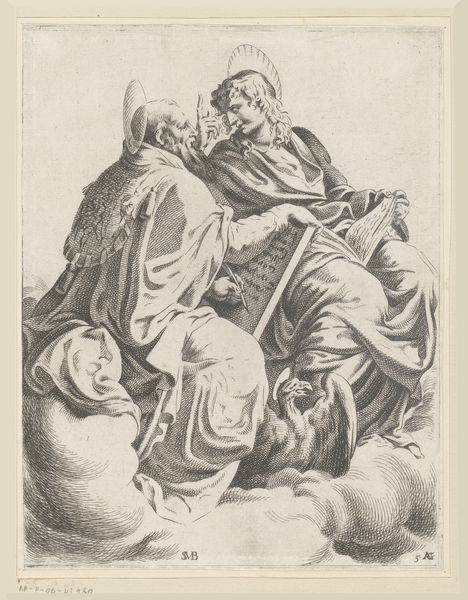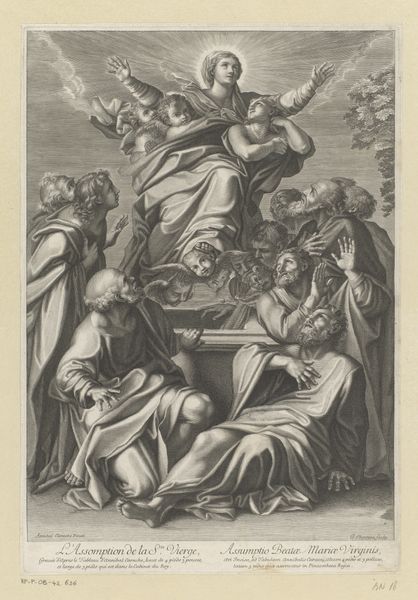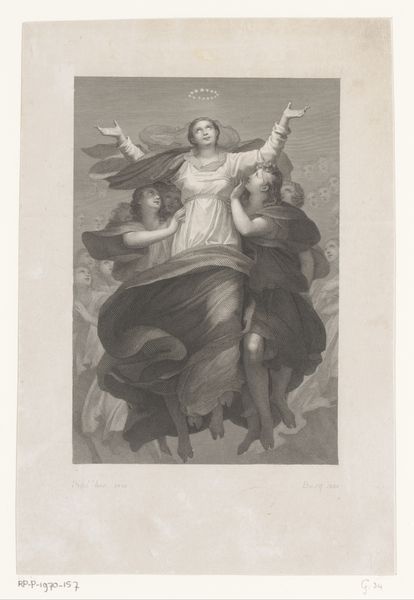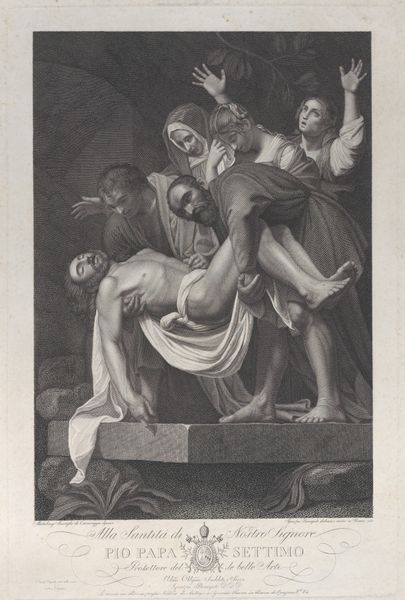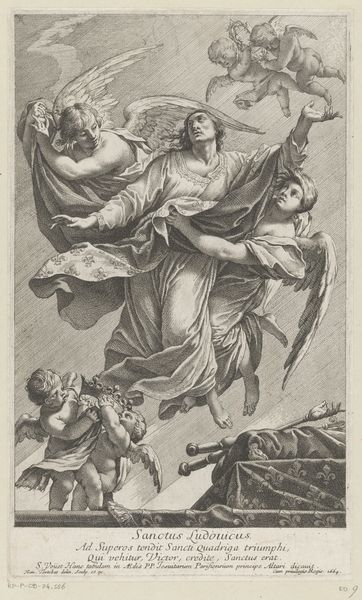
print, engraving
#
pencil drawn
#
allegory
#
baroque
# print
#
figuration
#
engraving
Dimensions: height 356 mm, width 273 mm
Copyright: Rijks Museum: Open Domain
Editor: This engraving, titled "Pendentief met Justitia," possibly made between 1649 and 1734, presents Justice as this towering figure. I'm immediately struck by the almost theatrical quality of it, the way she's posed above another figure shrouded in fabric. How does its historical context shape your view of this image? Curator: Considering this print's baroque style and period, we see a time grappling with evolving legal systems and power structures. Justice, as an allegory, becomes a visual argument. Think about the role of prints like this. Were they simply decorative, or were they shaping public opinion about the ideal of Justice, reinforcing or even questioning established norms through imagery? Editor: So, the intended audience plays a significant role. Were these kinds of prints common, in that era? Curator: Absolutely. Printmaking allowed for wider circulation of imagery and ideas. This piece, with its use of allegory and classicizing style, taps into a shared visual language, referencing both classical ideals and contemporary social realities. The specific iconography matters. Justice with scales, of course. But also, the implied relationship between justice and mortality, with the figure below supporting Justice above the clouds. It all hints at societal hierarchies and moral codes. What does that pairing evoke for you? Editor: I think it evokes a power dynamic, where mortality is almost the foundation of justice, like she's standing on us, representing humankind, yet the robes suggest an oppression and almost hiding the humanness. Interesting. So how was an artwork like this viewed at that time, by various societal actors? Curator: Good question! Rulers might have viewed it as justification of their authority, whilst others would see calls for more equitable judgement, critiquing any potential corruptions or misuses of the law. Considering these varied interpretations really unveils the public role of art in those days. Editor: Wow, looking at it with the lens of socio-political implications is interesting. It almost moves beyond a simple depiction and becomes an active voice in historical discourse. Thank you! Curator: Precisely. Thinking about that dynamic and power is central to understanding art of the period. My pleasure.
Comments
No comments
Be the first to comment and join the conversation on the ultimate creative platform.
